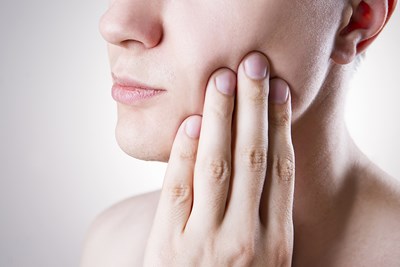Trigeminal neuralgia is a condition that is characterized by chronic pain in parts or all of the face. The pain is usually described as stabbing or electric shocks. It can come and go in a cyclical pattern or remain at all times. Here is a look at some things that can potentially cause trigeminal neuralgia.
Causes
The cause of trigeminal neuralgia is a disruption in the function of the trigeminal nerve, which is responsible for carrying sensation from the face to the brain. The malfunction of this nerve can occur for a number of reasons. These include:
-
Swollen blood vessel: This is the most common cause for trigeminal neuralgia, and it occurs when an artery or a vein makes contact with the trigeminal nerve at the base of the brain. The contact puts pressure on the nerve, which causes it to malfunction.
-
Multiple sclerosis: This is a disorder that causes damage to the myelin sheath that protects certain nerves. Sometimes multiple sclerosis is the cause for trigeminal neuralgia developing.
-
Aging: Sometimes trigeminal neuralgia is simply the result of aging, as it is most common among people who are over the age of 50.
-
Brain tumor: In rare cases, trigeminal neuralgia is caused by a tumor that is compressing the trigeminal nerve.
-
Brain lesion: Other abnormalities in your brain, such as a lesion, can also apply pressure to the trigeminal nerve and lead to the symptoms of trigeminal neuralgia.
-
Surgical injuries: If you have surgery on your face or your brain, trigeminal neuralgia is always a potential complication.
-
Stroke: Strokes can cause numbness in the face, but they can also lead to the symptoms of trigeminal neuralgia in some cases.
-
Facial trauma: If you suffer any injuries to your face for any reason, you could damage the trigeminal nerve, which could possibly lead to the symptoms of trigeminal neuralgia.
Triggers
Often, the pain that is associated with trigeminal neuralgia is caused by stimulation to your cheeks or other parts of your face. These specific stimulants are referred to as triggers. Common triggers include:
-
Shaving
-
Encountering a breeze
-
Smiling
-
Washing your face
-
Eating
-
Drinking
-
Touching your face
-
Talking
-
Putting on makeup
-
Brushing your teeth
Triggers will be different for everyone, depending on which branches of the trigeminal nerve are causing the pain in your face. When your doctor is diagnosing you, knowing the specific triggers and the areas of your face that are experiencing the most pain will be helpful for determining which parts of the trigeminal nerve are damaged. This information can also help to determine if there is an underlying cause for your condition.
Risk Factors
There are a few things that increase your risk for trigeminal neuralgia. These include:
-
Age: People over the age of 50 will have an increased risk for trigeminal neuralgia.
-
Sex: Women tend to have trigeminal neuralgia much more often than men do.
-
Surgery: If you have a surgical procedure performed on your face, this increases the risk of developing trigeminal neuralgia in the future.
-
Trauma: If you suffer trauma to any area of your face, this could also potentially lead to the development of trigeminal neuralgia.



